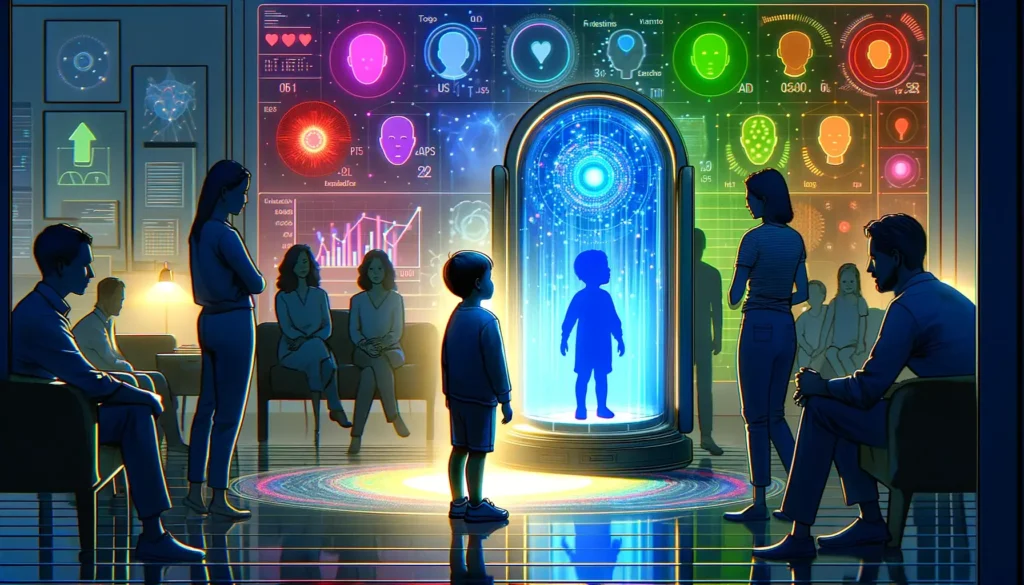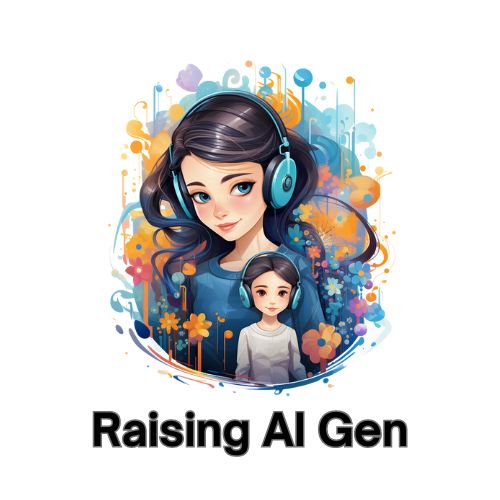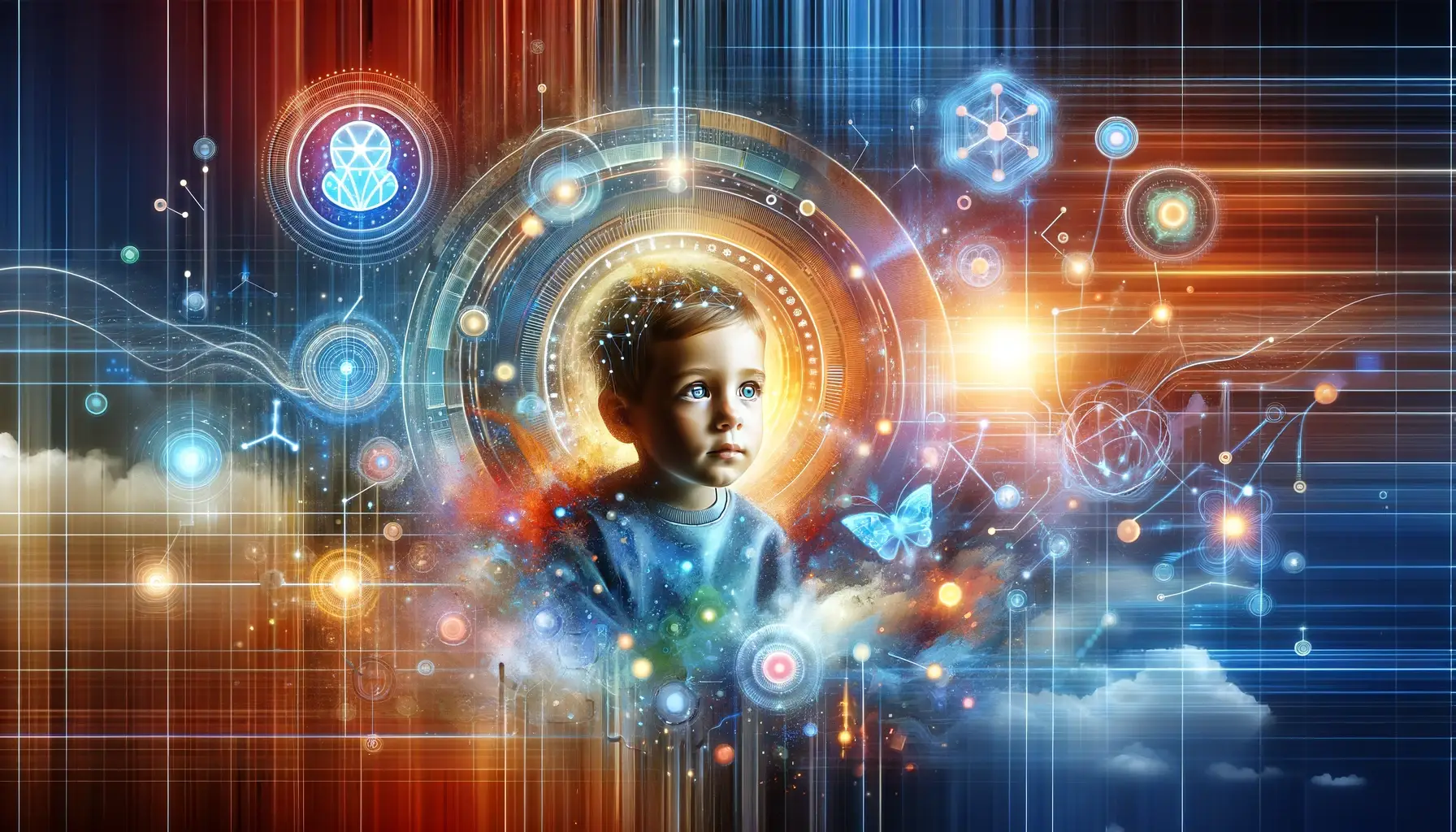The veil shrouding the intricate world of child behavior is being lifted, thanks in part to the advancements in artificial intelligence (AI). Pioneering methodologies are now merging with child psychology to illuminate the patterns of development and interaction in children. By analyzing child behavior with AI, a new frontier in behavioral observation and management is unfolding. These AI models quickly process extensive data—in a manner reminiscent of a magician’s swift hand—to expose the deepest cognitive and emotional layers of a child’s behavior.
In the quest for understanding, technology transcends the traditional, employing AI in the fields of child behavior analysis to observe, interpret, and predict behaviors that escape the human eye. With the power of AI, educators and caretakers are endowed with an enhanced capacity for behavioral analysis for kids, enabling more personalized and precise care for each young individual. Through the use of AI to understand child behavior, we can now support a child’s unique developmental journey like never before.
Key Takeaways
- AI enhances behavioral analysis by identifying subtle patterns and providing detailed insights into child development.
- Using AI to understand child behavior adds efficiency and precision to educational and therapeutic strategies.
- AI-driven analytics translate volumes of data into actionable knowledge, fostering better intervention outcomes.
- Behavioral analysis for kids through AI allows for early detection and support for a range of emotional and psychological needs.
- Advanced AI models are instrumental in tailoring child-centric approaches that cater to individual learning and behavioral styles.
The Intersection of Artificial Intelligence and Child Psychology
At the juncture of technological innovation and child psychology, AI is transforming our grasp of young minds. This new era employs a blend of AI technology for child behavior assessment and analysis, revealing nuanced understanding that guides caregivers and educators. Here, we explore how AI shapes the art of perceiving children’s needs and patterns, presenting a brighter future through informed, considerate guidance.
How AI Analysis for Child Behavior Works
At the core of harnessing AI for understanding children’s behavior lies the meticulous process of training. AI models absorb vast quantities of data, ranging from educational texts to everyday dialogue, equipping them with the context needed to decode complex behavioral signals. Like diligent detectives, these AI systems synthesize linguistic and non-linguistic cues, sketching out patterns that resonate with the subtleties of child behavior and yielding analysis with profound depth and accuracy.
AI Technology for Child Behavior: Applications and Benefits
The jewels in the crown of AI technology are its diverse applications that extend over vast horizons of child care and development. Personalized learning experiences, nuanced behavior analysis, and judicious intervention strategies are all part of this advanced toolkit. The benefits of using AI to understand child behavior are abundant, encapsulating enhanced personalization, real-time adaptability, and a growth-centric approach designed to nurture the optimal development of each child.
AI Tools for Diagnosing Childhood Behavioral Disorders
With ai tools for diagnosing childhood behavioral disorders, a new frontier in clinical precision appears on the horizon. Such tools delve into the intricacies of speech patterns, intricacies of interaction, and more, spotlighting tendencies that could elude even the most skilled professionals. The data these AI instruments accumulate serves as a cornerstone for early diagnosis, allowing for interventions that are not only timely but also emboldened by clarity and focus, steering children towards more fulfilling paths.
| AI Application | Impact on Child Behavior Analysis |
|---|---|
| Customized Learning Modules | AI-driven analysis formulates education plans that align with a child’s unique learning style and pace. |
| Real-time Behavior Monitoring | Leveraging AI allows for continuous observation and immediate intervention, promoting a supportive environment for behavioral growth. |
| Early Warning Systems | AI’s predictive prowess enables preemptive action against potential developmental concerns. |
| Behavior Trend Forecasting | Insights from AI technology forecast long-term patterns, aiding in strategic planning for child development milestones. |
Understanding Child Behavior with AI Analysis: A Deep Dive into Techniques
The evolution of technology has brought forth new opportunities to aid in understanding child behavior with AI analysis. Using sophisticated tools such as machine learning, natural language processing (NLP), and computer vision techniques, AI is carving a niche in the analysis of child behavior, providing insights that refine the standards of behavior management with AI.
Machine learning stands as a cornerstone in this domain. Through both supervised and unsupervised learning methods, AI models learn to navigate the complexities of human behavior, recognizing recurring patterns. As these AI systems grow more adept at decoding linguistic and behavioral cues, they improve in agility and accuracy, making ai analysis for child behavior increasingly impactful in real-world applications.
NLP is the wizardry that allows AI to not only read but also understand and interpret the nuances in children’s language. This branch of AI elucidates both the said and the unsaid—helping uncover the layers of meaning in a child’s verbal and written communication. It stands at the forefront of changing how we grasp the subtleties of a child’s thoughts and feelings.
Computer vision adds another layer to this intricate puzzle. This AI technique equips machines with the ability to interpret the world visually, understanding nonverbal cues such as gestures and facial expressions. When combined, these capabilities allow AI to compose a rich, dynamic picture of a child’s communicative landscape.
These pioneering methods coalesce to construct a highly sensitive instrument capable of fine-tuned analysis. The table below manifests the interplay of AI techniques and their tangible benefits in facilitating a deeper connection with and support for a child’s behavioral development.
| AI Technique | Role in Behavioral Analysis | Benefits |
|---|---|---|
| Machine Learning | Identifies behavioral patterns from data. | Customizes learning and therapeutic strategies. |
| Natural Language Processing | Interprets children’s language and discourse. | Enhances communication and emotional understanding. |
| Computer Vision | Recognizes nonverbal communication signs. | Complements verbal analysis with nonverbal context. |
Considering these applications, it is undeniable that AI analysis for child behavior does not merely shadow traditional approaches, but innovates upon them. The continual learning processes of AI models symbolize a new dawn in psychological and educational fields, customizing interventions to the evolving dynamics of each child’s behavior.

Embracing these AI techniques ensures that the journey towards understanding children’s behavior with AI analysis is focused on nurturing individual pathways for growth and enrichment. As AI’s analytical prowess deepens, our scope for supporting children in their developmental journey likewise expands, guiding them with insight backed by data and empathy powered by technological innovation.
Challenges and Ethical Considerations of AI in Child Behavior Management
While understanding child behavior with AI analysis offers innovative insights, integrating behavioral analysis for kids via AI brings forth ethical quandaries and operational challenges. The responsibility of managing sensitive behavioral data underscores the need for stringent protocols to ensure children’s safety and privacy. The utilization of AI-driven instruments demands a careful balance between technological possibilities and the ethical imperatives that govern child-centric applications.
Navigating Data Privacy and Security in Behavioral Analysis for Kids
The field of behavioral analysis for kids is sensitive, with data privacy and security taking center stage. Ensuring the guardianship of personal information, especially when analyzing child behavior with AI, is paramount. AI systems that assess child behavior need to comply with robust legal standards, such as the Children’s Online Privacy Protection Act (COPPA), protecting the interests and rights of the youngest subjects involved. These legal frameworks are not just checkboxes but are pivotal in maintaining public trust in AI use.
Exploring the Accuracy and Reliability of AI-Driven Child Behavior Assessment
AI’s capability to transform our methods of child behavior assessment is tremendous, yet hinges critically on the precision of its outputs. The adage ‘garbage in, garbage out’ is pertinent in the context of AI, where biases in training data can skew assessments. Consequently, continual vetting and refinement of AI models are integral to ensuring that AI analysis for child behavior is not only accurate but also reflective of the complex tapestry of human behaviors.
Using AI to Understand Child Behavior While Ensuring Equity and Access
In the pursuit of employing AI in understanding children’s behavior, accessibility remains a concern. It is essential that innovations such as AI analysis for child behavior are not confined to demographics with better resources, potentially excluding vulnerable populations. An inclusive approach is needed to ascertain that technological advancements in understanding children’s behavior with AI analysis are available to all, ensuring that every child benefits from the tailored and informed interventions that AI can provide.
Frequently Asked Questions
| Question | Answer |
|---|---|
| How do you understand a child’s behavior? | Understanding a child’s behavior involves observing their actions, reactions, and interactions in different settings. It’s important to consider their developmental stage, environmental factors, and emotional needs. |
| How do you explain generative AI to a child? | Generative AI can be explained to a child as a type of smart computer program that can create new things like stories, pictures, or music by learning from lots of examples. It’s like a very creative robot. |
| Can AI understand human behavior? | AI can analyze patterns in human behavior by processing large amounts of data, but it doesn’t ‘understand’ in the human sense. It identifies trends and makes predictions based on statistical analysis. |
| What is artificial intelligence understanding for kids? | For kids, artificial intelligence understanding means recognizing that AI is a tool used by computers and robots to perform tasks that usually require human intelligence, like recognizing speech, solving problems, or playing games. |
| How does AI impact child learning and development? | AI can positively impact child learning and development by providing personalized educational content, interactive learning experiences, and tools for teachers to better understand and support individual student needs. |
| Can AI detect emotional issues in children? | AI can help detect emotional issues in children by analyzing speech patterns, facial expressions, and behavior, but it should be used alongside professional human judgment for accurate assessment. |
| What are the ethical considerations in using AI with children? | Ethical considerations include ensuring privacy and data security, avoiding bias in AI algorithms, and making sure that AI is used in a way that supports and does not hinder a child’s natural development. |
Further Reading
| Title | Link |
|---|---|
| How AI is Used in Mental Health | Read More |
| Is There an AI for Mental Health | Read More |
| AI in Education Books | Read More |
| AI Personalized Learning | Read More |
| AI Speech Therapy | Read More |
| AI for Educators | Read More |
| Kids Guide on an AI Adventure | Read More |





